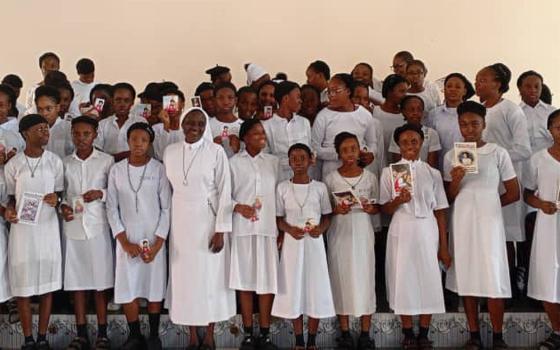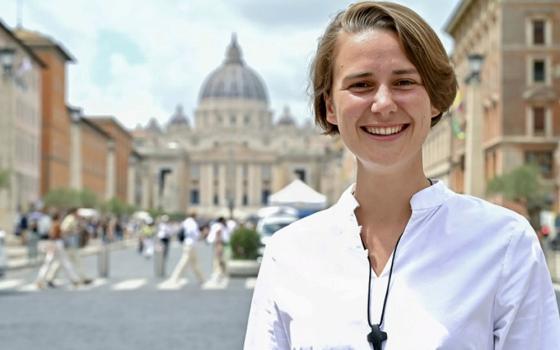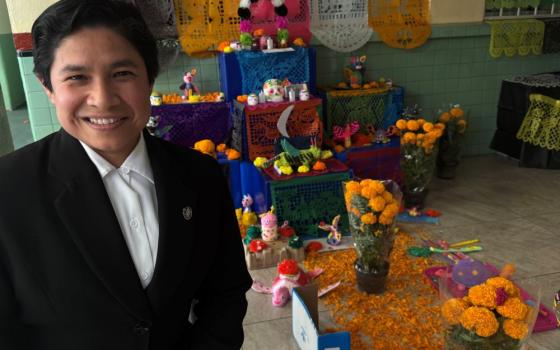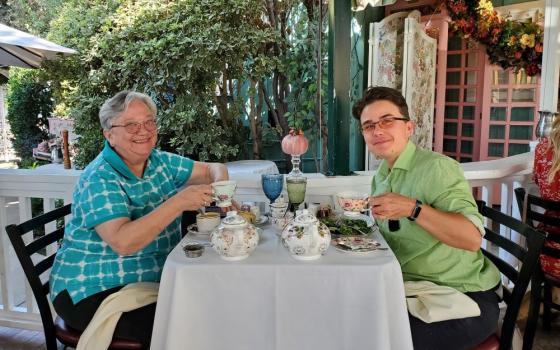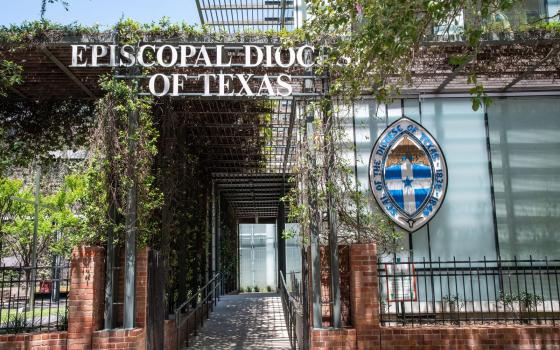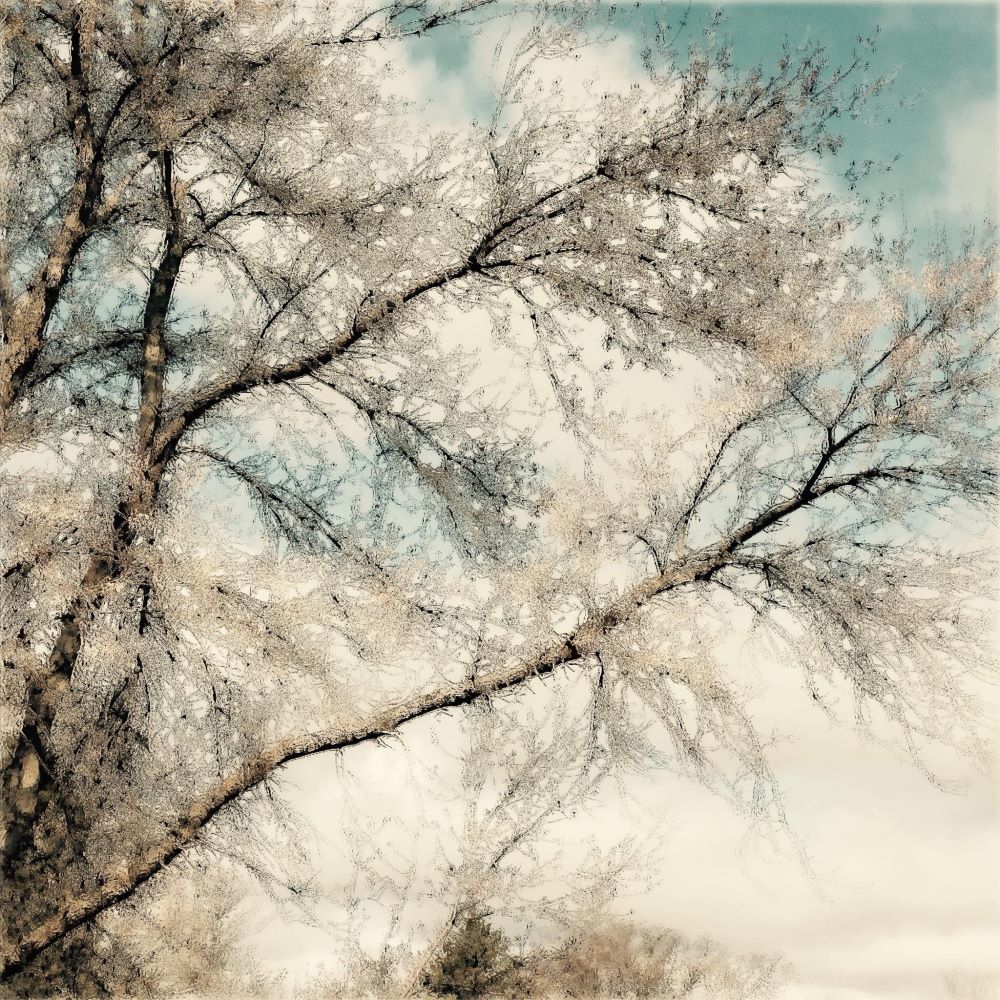
"A Garden's Promise, " a photograph by Sr. Jacqueline Leiter (Courtesy of Jacqueline Leiter)
When Benedictine Sr. Jacqueline Leiter looks at rocks, and particularly the cracks and shadows, she sees something many people might overlook: gifts from God. She believes in taking her time during walks through the natural areas north of her home at St. Paul's Monastery in Minnesota so that she can appreciate the rocks and other outdoor beauty often missed in the hustle and bustle of daily life.
"There are these beautiful places up north with these huge rocks, and I can see these cracks in them and it sometimes tells a story. I just love the trees and clouds. God created the world and sustains it. I see nature as a way God speaks to us," said Leiter, a watercolor artist and photographer.
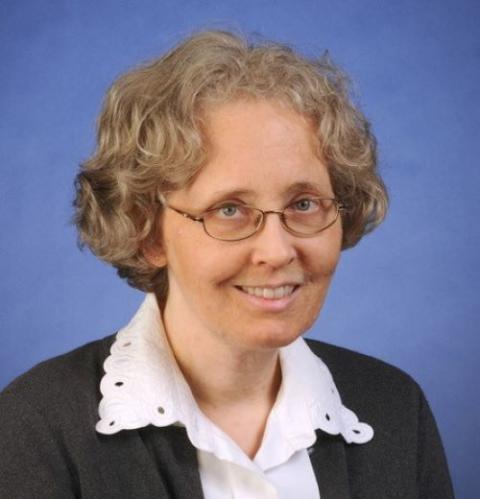
Benedictine Sr. Jacqueline Leiter is a watercolor artist and photographer. (Courtesy of Jacqueline Leiter)
She recalled being drawn to both God and art at an early age while growing up in Maplewood, Minnesota, with her twin sister, Stacy, brother, Doug, and mother and father. She considered majoring in art in college before deciding on Spanish and Hispanic studies with a double major in religion. Her first job was as an ESL (English as a second language) teacher and she taught in the St. Paul Public Schools for about 20 years.
While she was teaching at Immaculate Conception School in Columbia Heights, a parent in the school invited Leiter to Oblate Sunday at St. Paul's Monastery. Leiter, the granddaughter of Oblates, was happy to attend and was invited to become one. It was a key moment in her formation as a Benedictine sister. "I wanted to see God with others in community," she said, as well as make a difference for the children she lovingly taught.
"What I loved most was my students and their families. They were so beautiful. Many came from challenging situations, but they were large-hearted and grateful people. Hospitality is a central value for Benedictines. We try to see and welcome the other person as Christ," she said. "For me, teaching was an opportunity to be a welcoming presence for my students and their families. I learned so much from them. They often were a welcoming presence for me. It was beautiful to see my students blossom as they learned to read and express themselves."
Leiter stepped away from teaching after the 2022-23 school year to start a graduate program at St. John's University School of Theology. She also serves on the St. Paul Monastery's leadership team as treasurer and is spiritual director in its Benedictine Center.
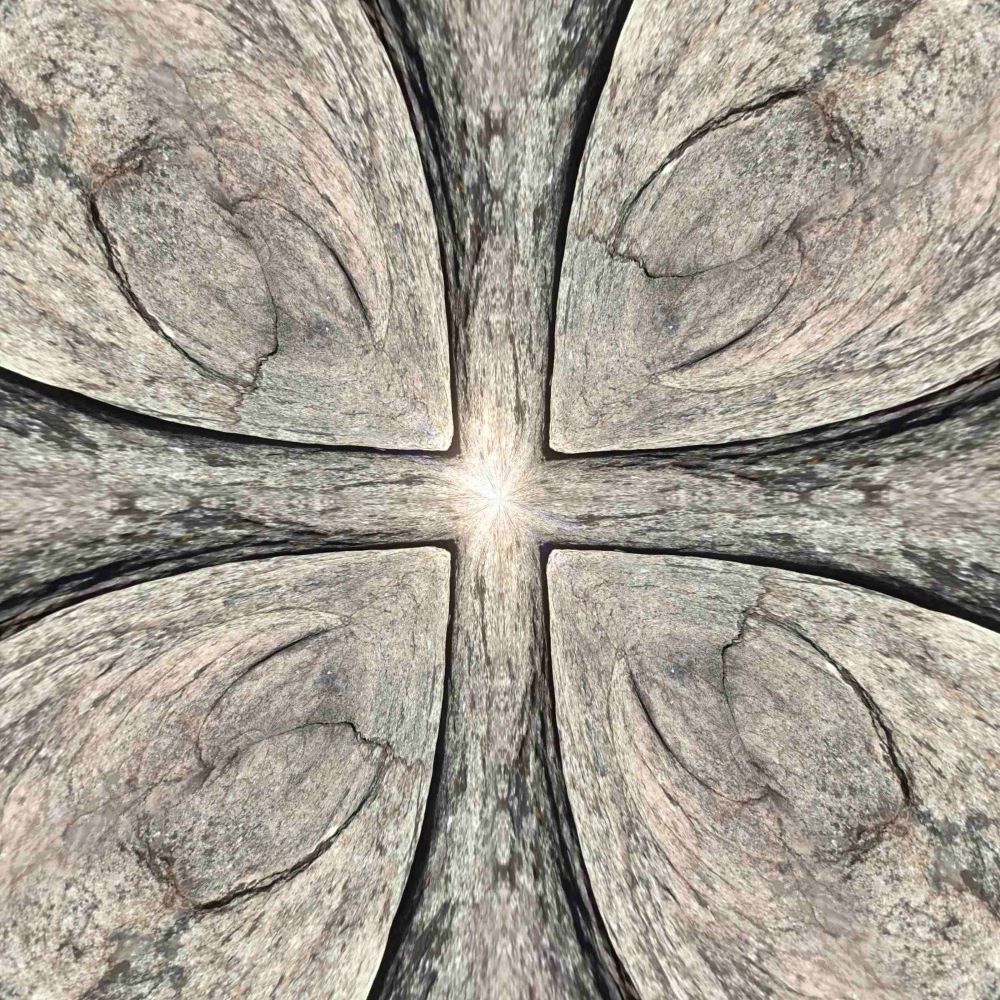
"Benedictine Cross," a photograph by Sr. Jacqueline Leiter (Courtesy of Jacqueline Leiter)
The monastery features a gallery, and one of her photographs, called "Incarnation," won an award in the 2017 "Seeing God" juried exhibit there. Her photography also was featured in a group exhibition at a local St. Paul church in 2022, and she recently exhibited in a solo show.
Leiter recently talked with Global Sisters Report about how seeing a crack in a rock that resembled a cross, captured in a piece called "Sorrow," and other natural beauty inspires her artwork and photography. She also shared how technology has played an important role in her creativity.
GSR: When did you first become interested in art and photography?
Leiter: For as long as I can remember, I have always loved art. Even back in kindergarten, I loved drawing and painting. I painted and worked with clay in school, and my dad and grandparents always took pictures. In college, I took a photography class, but I did not have access to the equipment I needed after that.
About 10 years ago, I started taking pictures of nature on retreats with my iPad. I love going up north because it is a special place with a lot of forest and Lake Superior. I started using various apps to play around with different effects.
I also had been doing watercolor painting and I did circles that were centering, and that drew me in. One app allowed me to take a photo and stretch it into a circle — some people call it a mandala — and that is fun to play with.

"Entering the Tomb," a photograph by Sr. Jacqueline Leiter (Courtesy of Jacqueline Leiter)
What do you enjoy most about art and photography?
When I work on art, it makes me feel quiet inside. I feel delighted by surprise and joy when one of the photos turn out. Sometimes after making the picture, I look at it and then I know what the picture represents and I write a pantoum poem or another kind of poem about it.
I never really know what is going to happen when I try one of the apps, and I'm grateful when something comes out and it is beautiful. It's hard to find time to do watercolors, so doing the photography with an app is something I can do anytime and I can come back to it easily.
How do they reflect or complement your faith?
Sometimes I look out the windows and I see the sky or I see light shining on the water and I think it is beautiful. I think God is a little shy and wants to be seen. I don't always see or pay attention, and photography is a way to step back and pay attention. It's also a way of loving the world and each other, caring for each other and caring for our world.
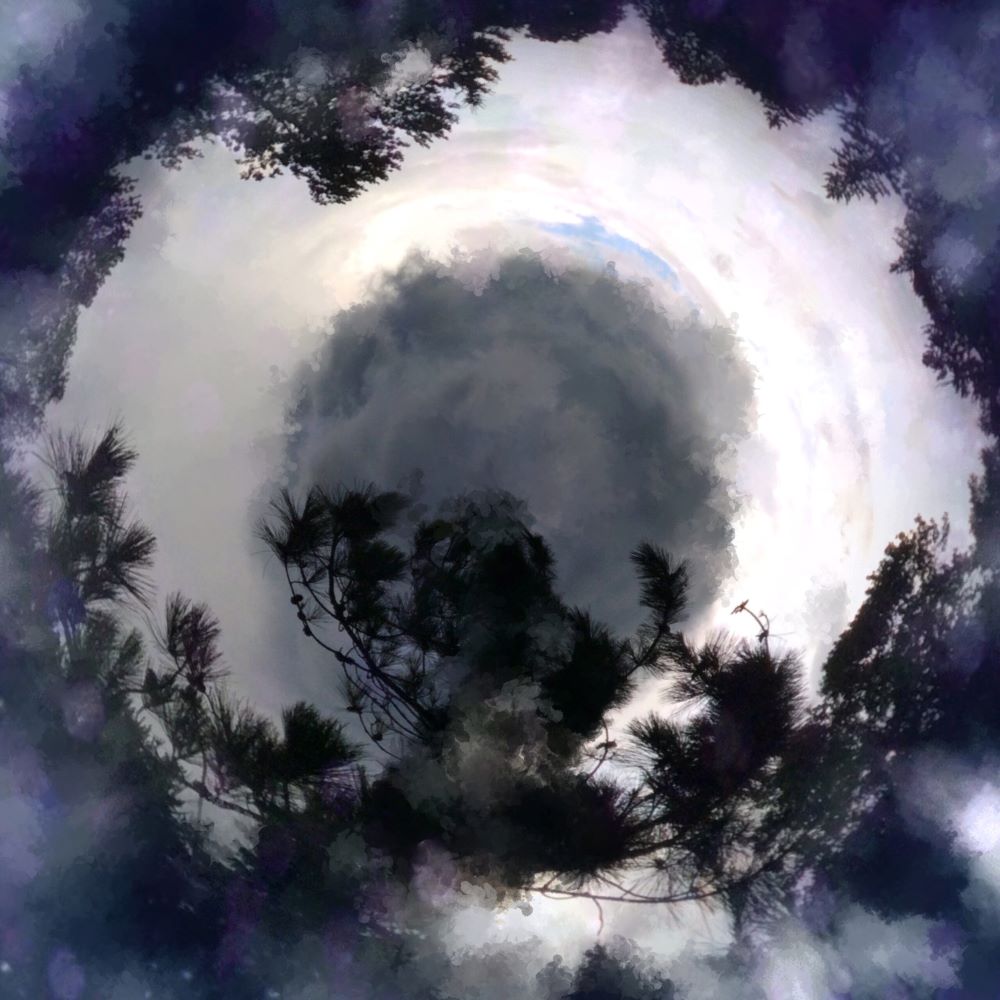
"Incarnation," a photograph by Sr. Jacqueline Leiter (Courtesy of Jacqueline Leiter)
Prayer is a rhythm of life for Benedictines and psalms are really important to me. I can look at my artwork and it's talking to me and telling a story, maybe of a psalm. Art is a way to add beauty to the world and respond to God's creation "so that in all things, God may be glorified."
Art and the natural world invite us to encounter the holy in our lives and to open the eyes and ears of our hearts. God's voice may come to us in a still, small voice when we do not expect it. My photography seeks to connect with this voice. Gazing on the beauty of the world, of land, sky, water and on the beauty of each other becomes a way to encounter the holy in our lives and invites us to open our hearts to something new.
Through my work, I seek to represent the experience of listening to the voice we hear within. This voice may encourage and strengthen us; it may challenge us and surprise us. My hope is that my images will help each person to find this place within and hear this voice within the ear of the heart.
Advertisement
How do they make you feel when you are doing them, and how do the finished products make you feel?
It feels like a prayer without words. Photography is several steps and starts with walking, sitting, observing and listening, and I realize there is something greater than me and I am small in God's presence.
I'm also not always sure of what effects the apps will create and I never know what is going to happen. I can be hopeful because I want to make something beautiful, but when it actually happens I'm grateful and surprised. I suppose I'm also a little bit afraid I won't be able to do it again.
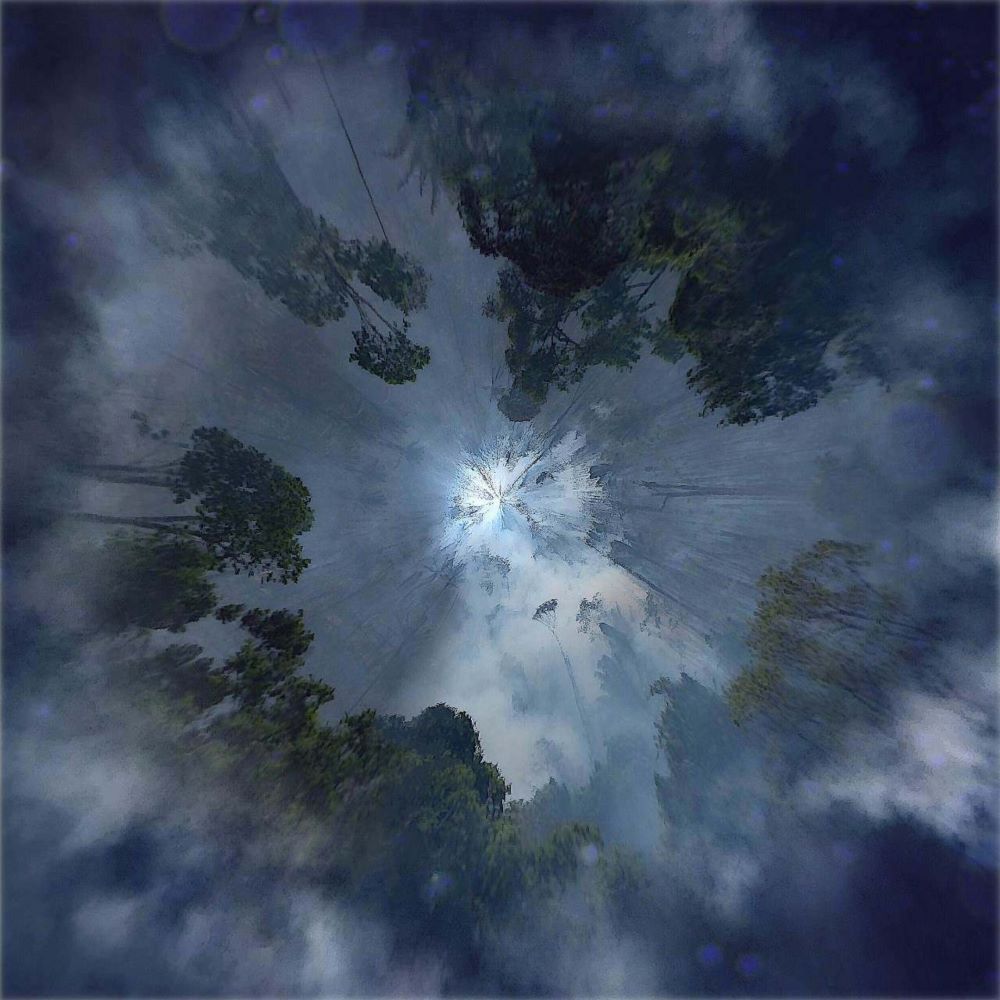
"Open Our Eyes," a photograph by Sr. Jacqueline Leiter (Courtesy of Jacqueline Leiter)
What is it like to see them in an exhibition?
I hung a mirror that was framed the same way as my photos with the title of "Beloved." I wanted people to see themselves and see that they are beloved by God. It generates the most comments so I'm happy to see that.
I also included haiku poetry written by Benedictine Srs. Rose Alice Althoff and Carol Rennie, who wrote poetry as a prayer. They were members of my community who were special to me and are now deceased. Those poems are speaking to the pictures, and people are bringing their own story when they look at the artwork. I'm really grateful, too. People sometimes tell me their story and it is a gift when they do. I am grateful that God is able to use my work that way.
Visio divina is a form of the ancient prayer of lectio divina combining divine reading, seeing and listening. By seeing with eyes of faith, we become aware of the colors, images and words before us. Our hearts open wider to see and hear. "Let us open our eyes to the light that comes from God, and our ears to the voice from heaven that every day calls out" (Rule of St. Benedict Prologue 9).

